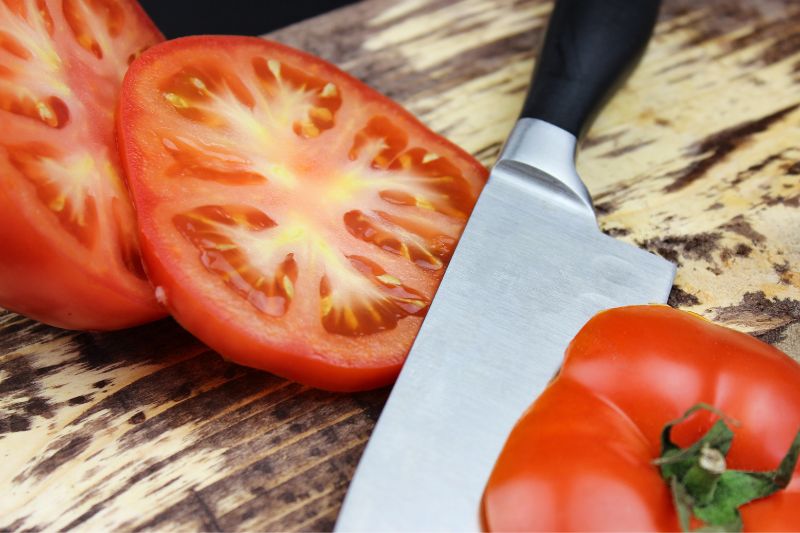How to Properly Cut Food with a Knife: Tips for Perfect Cuts
Written By James Morgan
Barbecue enthusiasts know that how to properly cut food with a knife can make or break a dish. Whether it's slicing the perfect brisket or chopping vegetables for your famous BBQ sauce, the way you handle your knife is crucial. In this article, we'll dive deep into the skill of cutting food with a knife, offering tips and techniques to elevate your barbecue game.

Types of Knives Every BBQ Enthusiast Should Have
When it comes to how to properly cut food with a knife, having the right tools is half the battle. Here are some must-have knives for any barbecue enthusiast:
- Chef's Knife: The workhorse of the kitchen, perfect for a variety of tasks.
- Paring Knife: Ideal for smaller, more delicate cuts.
- Serrated Knife: Great for cutting through bread and other foods with a tough exterior but soft interior.
- Boning Knife: Essential for getting that perfect cut of meat.

Grip and Technique: How to Hold a Knife
The first step in how to properly cut food with a knife is mastering your grip. Here's how:
The Pinch Grip
Many professional chefs start with the pinch grip. Hold the blade between your thumb and index finger, wrapping the rest of your fingers around the handle. This grip offers better control and precision.
The Handle Grip
If you're new to knife skills, the handle grip might be more comfortable. Simply wrap all your fingers around the handle. While this grip offers less control, it can be easier to manage for beginners.

Essential Cutting Techniques for Barbecue Enthusiasts
Understanding the different cutting techniques is crucial in learning how to properly cut food with a knife. Let's explore some fundamental cuts:
The Slice
The slice is a basic yet essential technique. To slice, move the blade forward and downward in one smooth motion. This is perfect for cutting larger pieces of meat, like brisket or ribs.
The Chop
Chopping involves bringing the knife down in a quick, forceful motion. This technique is ideal for vegetables and smaller cuts of meat.
The Dice
Dicing involves cutting food into small, even cubes. First, slice the food into strips, then cut the strips crosswise to create cubes. This technique is perfect for making salsas or chopping vegetables for sauces.
The Julienne
Julienning involves cutting food into thin, matchstick-like pieces. This technique is often used for vegetables and can make your dishes look more refined and professional.

How to Cut Various Types of Foods
Different types of food require different cutting techniques. Let's break down how to properly cut food with a knife for some common barbecue ingredients:
Meat
When cutting meat, always slice against the grain for a more tender bite. Use a sharp knife and long, even strokes to achieve a clean cut. For more tips on meat cutting, check out this guide.
Vegetables
Cutting vegetables varies depending on their shape and size. Harder vegetables like carrots and potatoes should be chopped, while softer vegetables like tomatoes and peppers can be sliced or diced. For more vegetable cutting tips, visit this article.
Fruits
Fruits can be tricky to cut because of their varying textures and sizes. A paring knife is often the best tool for the job. For a comprehensive guide on cutting fruits, check out this resource.
Knife Care: Keeping Your Tools in Top Shape
Proper knife care is essential in how to properly cut food with a knife. Here are some tips to keep your knives in top shape:
- Sharpen Regularly: A dull knife is dangerous and ineffective. Use a sharpening stone or a honing rod to keep your knives sharp.
- Clean After Each Use: Always hand wash your knives and dry them immediately to prevent rust.
- Store Safely: Use a knife block or magnetic strip to store your knives safely and keep the blades from dulling.
Knife Safety Tips
Safety should always be a priority when learning how to properly cut food with a knife. Here are some essential safety tips:
- Keep Your Fingers Tucked: When holding the food you're cutting, keep your fingers tucked in to avoid accidental cuts.
- Use a Cutting Board: Always use a cutting board to protect your knife and countertop.
- Pay Attention: Focus on your task and never cut while distracted.
Frequently Asked Questions
Q: How can I keep my knife sharp?
A: Regular sharpening and honing are essential. Use a sharpening stone or honing rod and follow the manufacturer's instructions.
Q: What's the best way to store knives?
A: Store knives in a knife block or on a magnetic strip. Avoid storing them loose in a drawer, as this can dull the blades.
Q: How do I know which knife to use?
A: It depends on the task. A chef's knife is versatile, while a paring knife is great for small cuts. Serrated knives are best for bread and soft fruits. For more tips on knife selection, visit this guide.
As an Amazon Associate, I earn from qualifying purchases.



